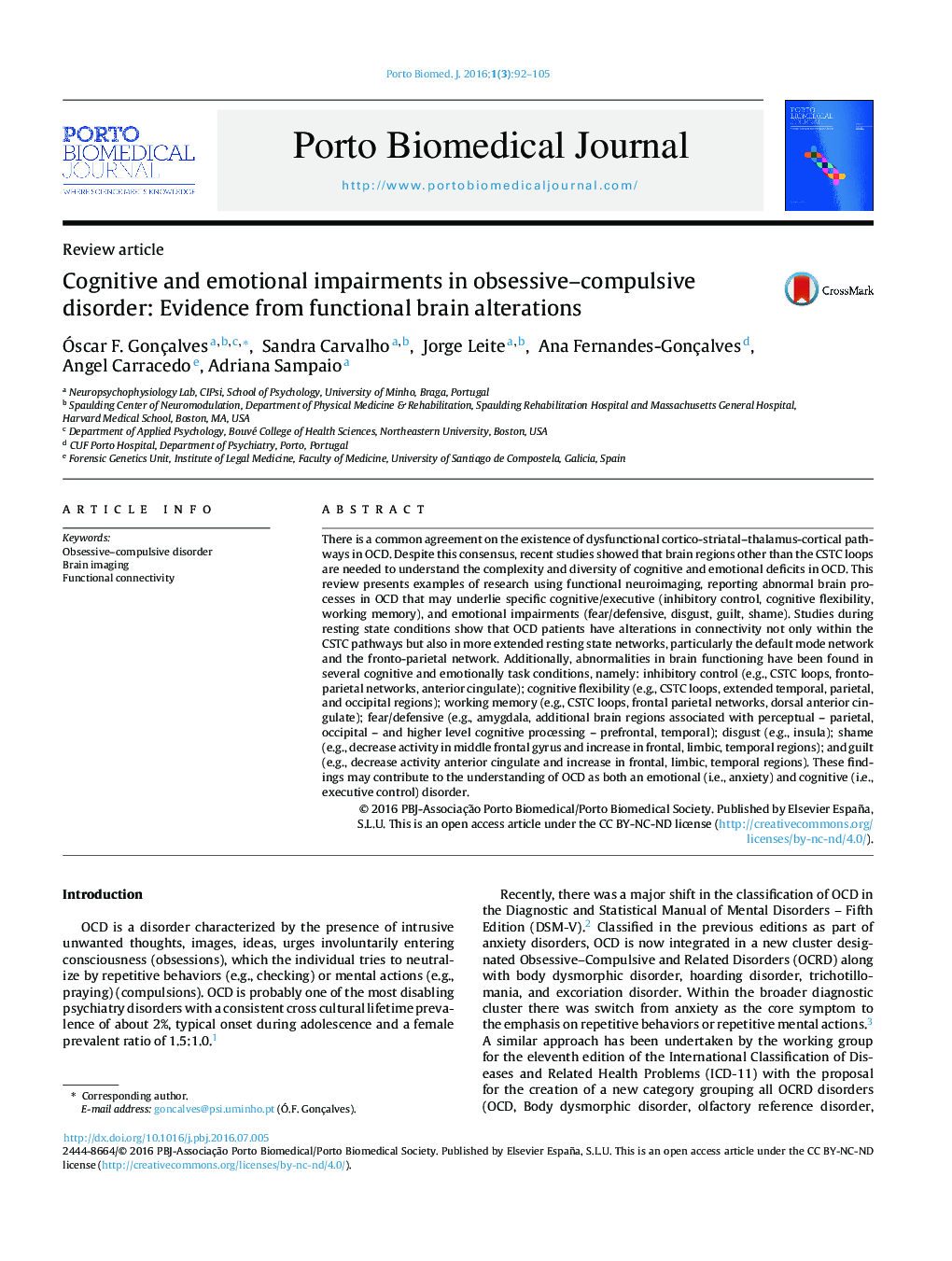| کد مقاله | کد نشریه | سال انتشار | مقاله انگلیسی | نسخه تمام متن |
|---|---|---|---|---|
| 8766076 | 1597744 | 2016 | 14 صفحه PDF | دانلود رایگان |
عنوان انگلیسی مقاله ISI
Cognitive and emotional impairments in obsessive-compulsive disorder: Evidence from functional brain alterations
ترجمه فارسی عنوان
اختلالات شناختی و عاطفی در اختلال وسواسی-اجباری: شواهد از تغییرات مغزی عملکردی
دانلود مقاله + سفارش ترجمه
دانلود مقاله ISI انگلیسی
رایگان برای ایرانیان
کلمات کلیدی
اختلال وسواسی-اجباری، تصویربرداری از مغز، اتصال به عملکرد
موضوعات مرتبط
علوم پزشکی و سلامت
پزشکی و دندانپزشکی
پزشکی و دندانپزشکی (عمومی)
چکیده انگلیسی
There is a common agreement on the existence of dysfunctional cortico-striatal-thalamus-cortical pathways in OCD. Despite this consensus, recent studies showed that brain regions other than the CSTC loops are needed to understand the complexity and diversity of cognitive and emotional deficits in OCD. This review presents examples of research using functional neuroimaging, reporting abnormal brain processes in OCD that may underlie specific cognitive/executive (inhibitory control, cognitive flexibility, working memory), and emotional impairments (fear/defensive, disgust, guilt, shame). Studies during resting state conditions show that OCD patients have alterations in connectivity not only within the CSTC pathways but also in more extended resting state networks, particularly the default mode network and the fronto-parietal network. Additionally, abnormalities in brain functioning have been found in several cognitive and emotionally task conditions, namely: inhibitory control (e.g., CSTC loops, fronto-parietal networks, anterior cingulate); cognitive flexibility (e.g., CSTC loops, extended temporal, parietal, and occipital regions); working memory (e.g., CSTC loops, frontal parietal networks, dorsal anterior cingulate); fear/defensive (e.g., amygdala, additional brain regions associated with perceptual - parietal, occipital - and higher level cognitive processing - prefrontal, temporal); disgust (e.g., insula); shame (e.g., decrease activity in middle frontal gyrus and increase in frontal, limbic, temporal regions); and guilt (e.g., decrease activity anterior cingulate and increase in frontal, limbic, temporal regions). These findings may contribute to the understanding of OCD as both an emotional (i.e., anxiety) and cognitive (i.e., executive control) disorder.
ناشر
Database: Elsevier - ScienceDirect (ساینس دایرکت)
Journal: Porto Biomedical Journal - Volume 1, Issue 3, JulyâAugust 2016, Pages 92-105
Journal: Porto Biomedical Journal - Volume 1, Issue 3, JulyâAugust 2016, Pages 92-105
نویسندگان
Ãscar F. Gonçalves, Sandra Carvalho, Jorge Leite, Ana Fernandes-Gonçalves, Angel Carracedo, Adriana Sampaio,
